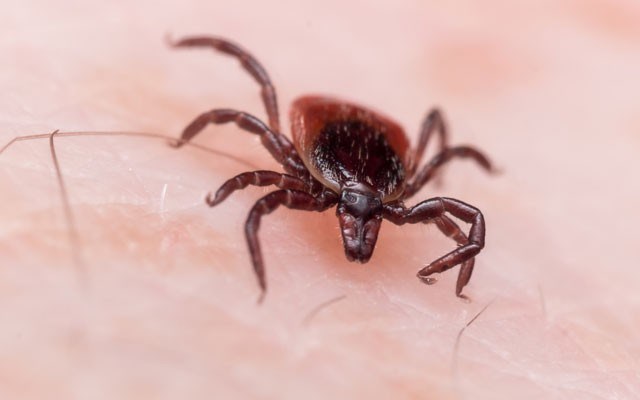Public health officials are predicting an increase in cases of Lyme disease in B.C. if long-term climate predictions hold true, but the West Coast likely won't see the disease with the same prevalence as Eastern Canada.
A recent study out of St. Francis Xavier University forecast that the blacklegged tick carrying Lyme disease bacteria could spread to all of Nova Scotia by 2040, and as far away as Newfoundland and Manitoba by 2070.
Researchers used climate data from the Intergovernmental Panel on Climate Change to forecast ticks' travel patterns under a number of different scenarios. Even if the global temperature targets in the Paris Agreement are met, the study's author said the spread of heat-drawn ticks is a foregone conclusion.
"The bad news is that even under the most optimistic scenario, there's enough climate change in the pipes already that it will spread all over Nova Scotia, for example, in about 25 years," said Dr. Hugo Beltrami, Canada Research Chair in Climate Dynamics. "The same is true for certain portions of New Brunswick, Ontario and Manitoba."
Although cases of Lyme disease are expected to rise, the outlook isn't as dire in B.C., where health officials see only a handful of cases each year.
"We're somewhat fortunate in B.C. where we don't have a lot of vector-borne diseases, and the ones we do have, like Lyme or West Nile virus, the risk to humans is very low, probably because of our cooler climate. But those could all see increasing trends with climate change," noted Dr. Eleni Galanis with the BC Centre for Disease Control.
Between 2003 and 2015, the last year data was available, B.C. averaged roughly 10 reports of Lyme disease a year, although Galanis estimated between half and two-thirds of those cases were actually acquired outside of North America. By comparison, 254 cases were reported in Nova Scotia in 2015, up from 115 the year prior.
Focusing on prevention remains the best way to stem the long-term rise of Lyme disease, Galanis said.
"I think it would be very difficult to get rid of a whole species of an insect," she said. "Prevention is the best approach; prevention from a population level, so that people are aware of how to protect themselves from tick bites, how to remove ticks if they do find them on themselves or their animals, and also education of the healthcare sector, so we are more familiar with how Lyme disease and other tick-borne diseases present so we can diagnose and treat rapidly."
The challenge, Galanis conceded, is getting the public to follow the prevention measures recommended by physicians.
"It means wearing long pants when you're walking in the woods, or covering yourself in insecticide, which people may not be as interested in doing," she said. "The other part is that if people don't follow those preventative messages, then they should at least look out for any tick bites and remove the ticks appropriately. Once they're removed, they can be sent in for identification and testing, and that's a service our lab provides."
Other ways Galanis recommended for preventing the disease is keeping grassy or bushy areas around the home cut short.
Lyme disease is a bacterial infection spread by certain species of ticks — typically the Ixodes pacificus in B.C. General symptoms include fever, headache, skin rash, muscle and joint pains, and fatigue or weakness of the muscles and face.
In some cases, paralysis can develop from within a few hours to several days from the time of infection. The faster you seek treatment, the better the medical outcome, generally.
For more information, visit www.bccdc.ca.




